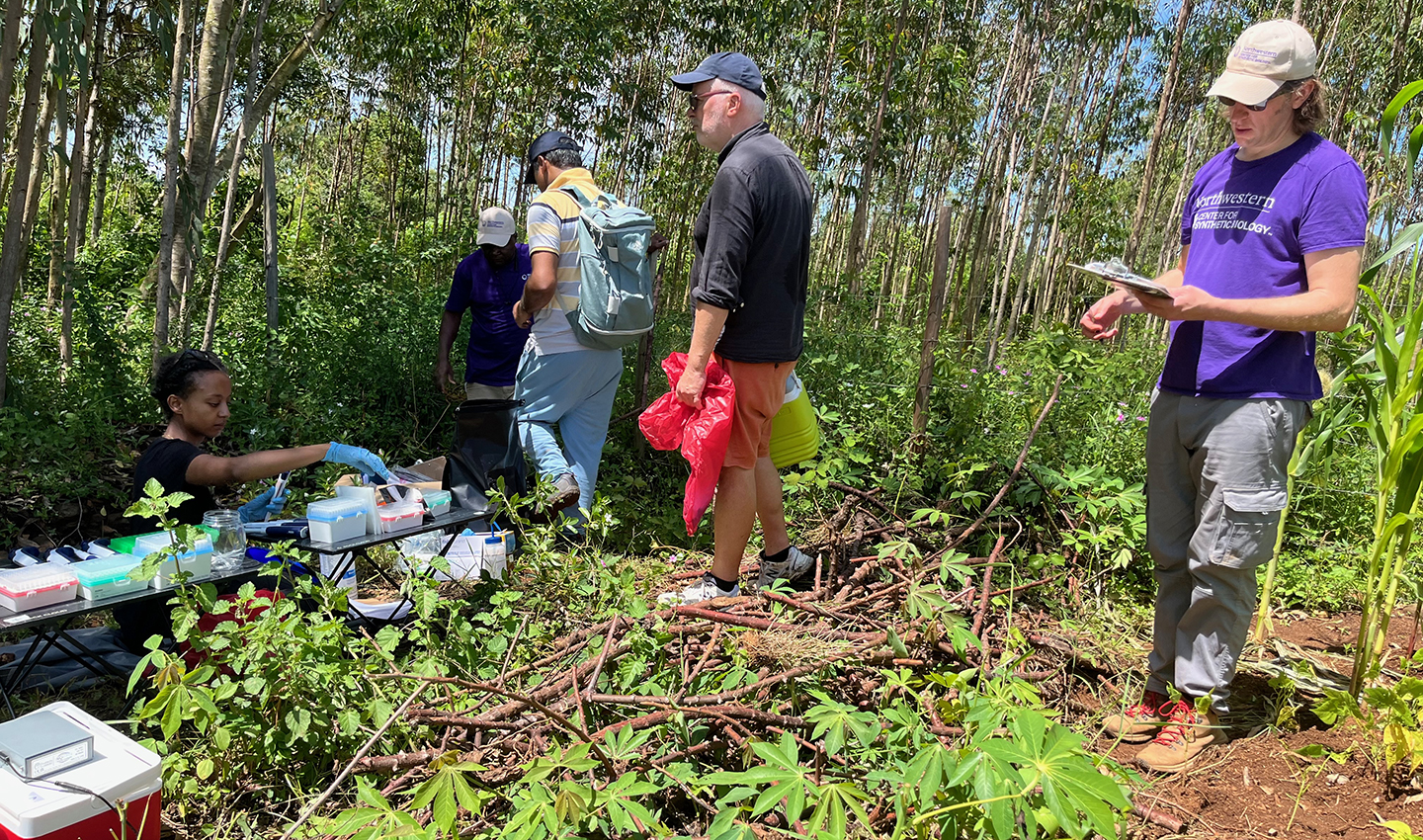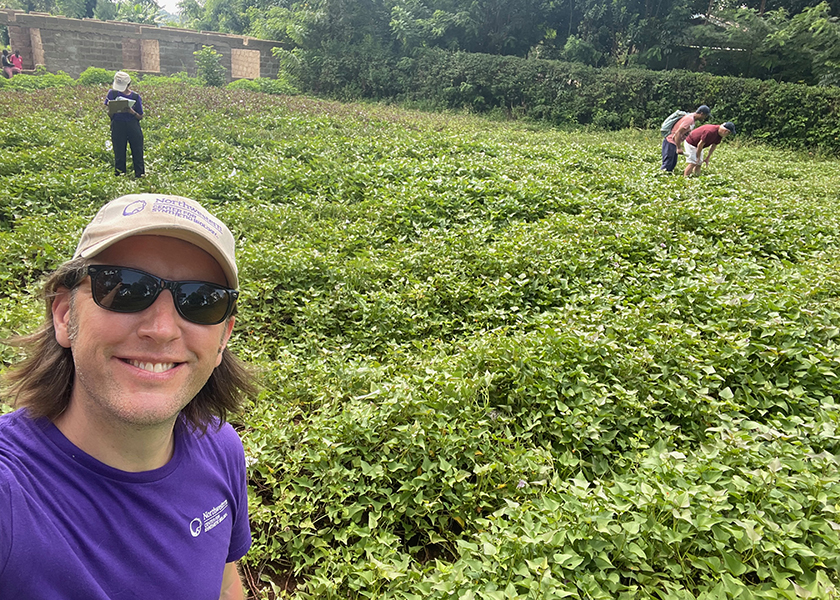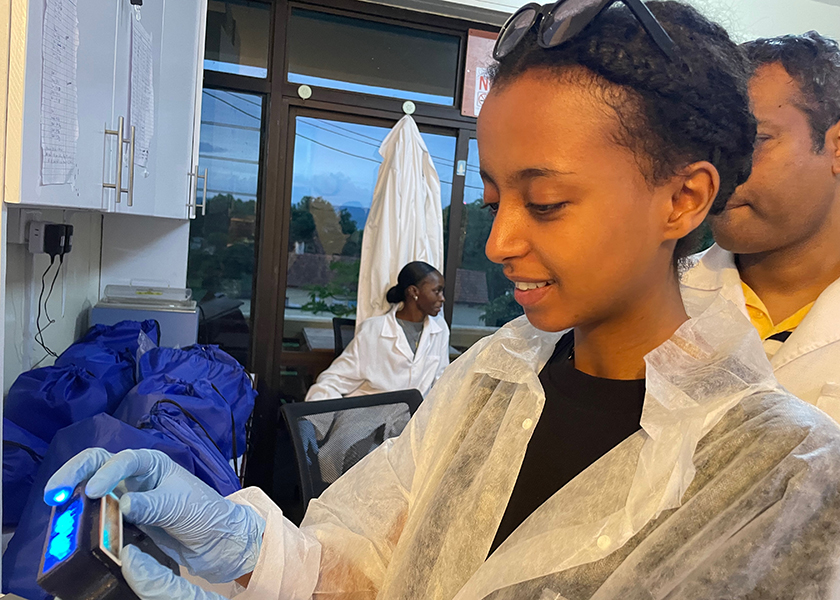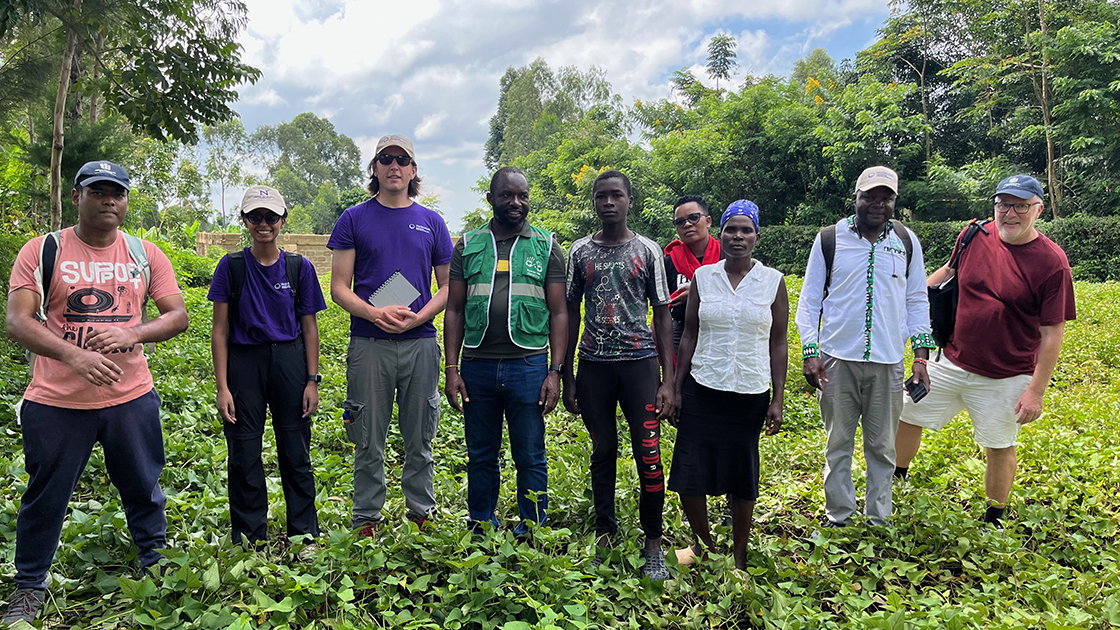Synthetic Biology Empowers Farmers with Cutting-Edge Crop Diagnostics
Julius Lucks led a team to Kenya to test a device to diagnose disease in crops

Northwestern Engineering’s Julius B. Lucks understands the value of lab work. As a professor of chemical and biological engineering at the McCormick School of Engineering and codirector of the Center for Synthetic Biology (CSB), Lucks and his lab investigate the molecular principles that enable biological systems to sense and adapt to changing environments. They then use the principles they discover, along with the techniques of synthetic biology, to develop new diagnostic technologies to tackle big societal challenges.
But Lucks stresses the importance of thinking beyond the science: learning about the people who will use new technology and their needs.
“Technologies can be beautiful and amazing and wonderful and special in the lab, and that’s cool,” Lucks said. “A lot of us in the field of synthetic biology are doing this because we believe it will make a difference for some of the world’s biggest problems.”
Lucks again put that into practice this spring when he led an expedition of scientists to Kenya to test his PLANT-Dx platform. The CRISPR-based technology, which leverages advances in in vitro synthetic biology, allows farmers in low-resource settings to diagnose disease in crops before symptoms even appear. Lucks believes that PLANT-Dx will eventually be used to apply mitigation strategies and save yields before it is too late.
During the trip, Lucks’s team brought tests designed to uncover cucumber mosaic virus, a broad-range virus found in bean plants; and sweet potato feathery mottle virus, which attacks sweet potato crops. The vision for the technology is for farmers to surveil their crops noninvasively, a challenging task because the pathogens can change from season to season.

The PLANT-Dx project is a collaboration between the CSB, the Plant Health and Environment Laboratory-Ministry of Primary Industries, the School of Agriculture and Food Security at Maseno University, and the National Crops Research Institute of Uganda. Crucially, Lucks enlisted the help of social scientists to interview farmers to understand their knowledge, attitudes, and behaviors around crop testing and the testing technology.
“We learned there was a key need for the test,” said Herma Demissie, a PhD student in Lucks’s lab, who organized the trip. “We learned that we could deploy the tests effectively in the field but we also needed to go through a few iterations to make the tests more user-friendly and target a broader range of different viruses.”
Planting the seeds
In 2018, Lucks pitched the Bill & Melinda Gates Foundation – as part of the Grand Challenges partnership network – an idea to develop a hand-held diagnostic for farmers to learn if they have pathogens before seeing them wreak havoc on crops. The Gates Foundation funded Lucks and he began working on the first version of PLANT-Dx, based in RNA engineering.
Lucks and his team employed cell-free synthetic biology. With synthetic biology, researchers take molecular machinery — including RNA— out of cells, and then reprogram that machinery to perform new tasks. The job here was to detect dangerous and costly pathogens.
Lucks’s team on the latest iteration of PLANT-Dx included scientists from the CSB and members from around the world including Kenya and New Zealand, creating logistical challenges due to different time zones and long distances between collaborators. The group had to find a way to produce the tests in Evanston and get them to Kenya so they could be evaluated in the field.

The first results were promising. The control reactions worked as the team hoped, indicating that the tests performed similarly to lab conditions and providing a strong starting point for the team to understand whether deploying the tests in the field is feasible.
“It was nerve-wracking and exciting at the same time,” Lucks said. “We learned a ton as scientists.”
It turns out, there would be much more to learn.
Boots on the ground
To truly get a feel for the needs of locals, Lucks worked with Kenyan anthropologist and Northwestern alum Patrick Mbullo Owuor (WCAS PhD ‘22) to find a network of farmers to visit. Eventually, 22 farmers were interviewed about their challenges with pathogens and what they were looking for to help salvage crops.
To get a fuller sense of what could make PLANT-Dx successful, the scientists embarked to Kenya for a one-week field test in May. They quickly learned that farmers were excited about the project, and it wasn’t hard to see why: many of them were using the crops not just to sell but to feed their own families.
“Having a role in early detection really enhances household productivity,” Demissie said.
Early in their trip, the team members attempted to work in the middle of the day but saw nobody else on the land because of the extremely high temperatures. They learned that farmers worked at dusk or dawn when the heat was more bearable, and realized that any indicators on the PLANT-Dx device would have to be modified to accommodate different light.
The tests were used on smallholder farms, and collected a range of symptomatic and asymptomatic plant samples. Those sampled are then placed in extraction bags and ground; subsequently, the freeze-dried tests are rehydrated with the extract and incubated. The fluorescence was measured to detect the presence or absence of the target virus, and the team found a range of symptomatic and asymptomatic crops - indicating potential cases of infection.
The research team saw firsthand the quality of the bean and sweet potato crops produced and heard what kind of tests the farmers would eventually like to use.
“You don't really get a sense of the conditions until you're actually there,” Demissie said. “Having the opportunity to go to Kenya was very, very valuable.”
Looking ahead
While the field test was successful, PLANT-Dx isn’t yet ready for widespread implementation.
Demissie and Lucks hope to keep building their team of collaborators, and to apply what they learned to the next phase of PLANT-Dx. Next year, the group will return to Kenya and bordering Uganda to expand their field testing, broaden the range of tested crops — including cassava, a plentiful and important crop in the region — and build engagement with local community stakeholders.
While the team’s goals grow even more ambitious, Lucks said they will continue to focus on connecting with those impacted the most.
“If you’re trying to do something for society,” Lucks said, “you have to include society.”





